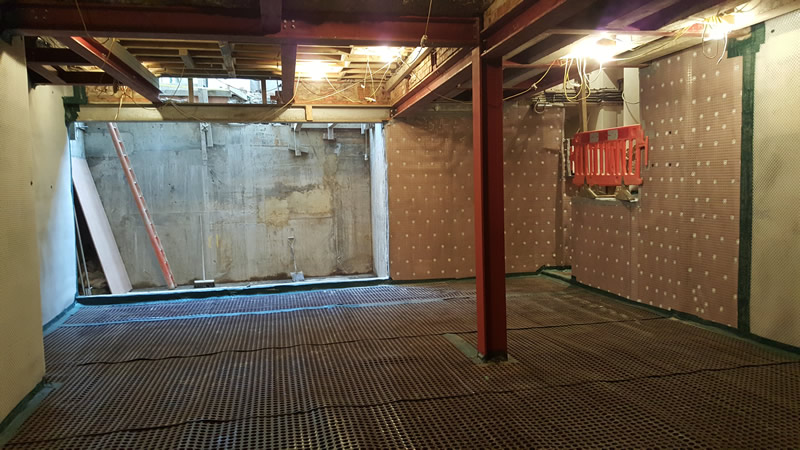Basements are an increasingly popular approach to extending the habitable space in a property; however, as they are below ground level, it is always important to pay attention to waterproofing. How much of a problem this is will depend on factors such as the area in which the property is located, the type of soil, and the level of the water table.
A number of factors can lead to water ingress into a basement. If the ground around the property is saturated – such as after heavy rain – water may seep in. Blocked drains or gutters around the outside of the property can also lead to water running down and finding its way into the basement; therefore, it is always important to ensure the outside of the building is kept in good repair.
Sealing
The traditional approach to waterproofing a basement is to seal it to keep moisture out. This process, which is sometimes known as tanking, involves sealing the walls with a waterproof membrane and any entry points for pipes and other services with an epoxy resin or urethane sealant.
This process can be expensive, especially with an existing basement, as it may be necessary to dig down alongside the walls to apply the waterproofing treatment. This is because in areas in which the water table is high and there is a good deal of hydrostatic pressure, a purely interior seal may be insufficient to keep out moisture. The wall will therefore need to be waterproofed from both sides.
Draining
A newer approach to waterproofing basements is to allow the water in and then drain it away. This is not strictly waterproofing; however, it is an effective method of making a basement space habitable. It is also cheaper than sealing methods.
This method involves creating a channel around the inside walls of the basement at floor level. Water is allowed to seep through from the outside and run down into this channel, from where is diverted to a drain – either by gravity to a sump from where it is removed to the drainage system or by using an electric pump. This is all hidden behind an inner wall that can be decorated in the usual way while the drainage arrangements go on unseen behind.
It is important with this type of system that the design enables access to the pump for maintenance. Modern pumps are quiet in operation, so they are unobtrusive; in any case, they will only operate when water in the sump reaches a certain level.
If you are in any doubt as to what is required, it is always worth consulting an expert who can advise you on the most appropriate waterproofing types to use in your area.

